Traditional Yorkshire Parkin
This post may contain affiliate links. See my disclosure policy.
If you’re a fan of gingerbread and are looking for something uniquely different – this traditional Yorkshire Parkin recipe is it! From Yorkshire, England, Parkin is an age-old cake featuring oats and black treacle (molasses) to create a delightfully sticky, chewy cake with a deeply robust flavor that only improves with time!
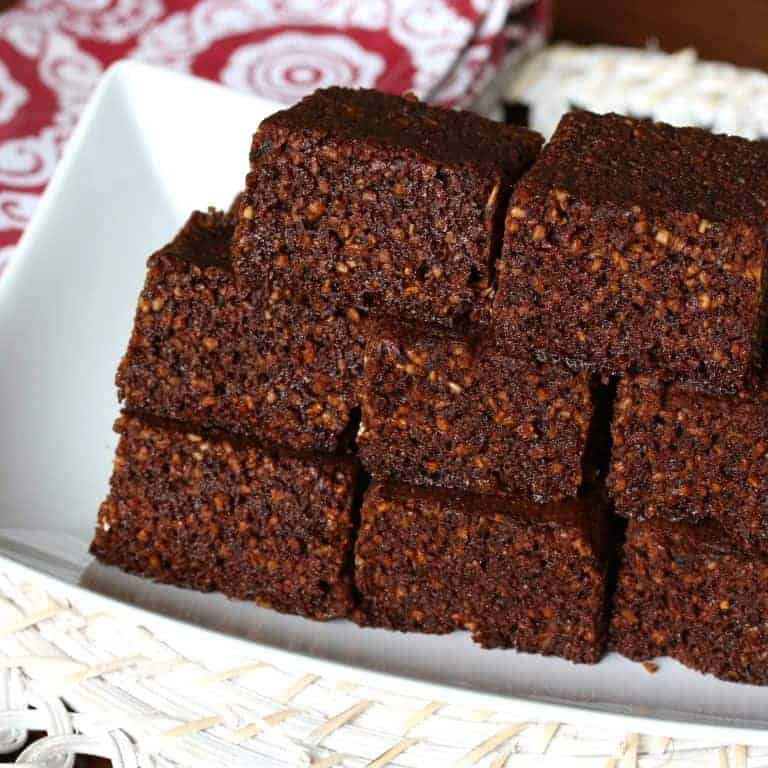
Where Did It Originate?
The year was 1728. Banging his gavel, the magistrate of the West Riding Quarter Session called the courthouse to order. The accused was brought forward. Standing erect in a pose of dignified capitulation, Mrs. Anne Whittaker, occupation housewife, listened as her offense was read aloud.
The crime: She had stolen oatmeal.
Her defense: Why, to make Yorkshire parkin, of course.
The verdict: Guilty as charged but dang, was the parkin worth it!
True story. And that was one of the first ever published references to Yorkshire parkin, the crime of theft, of culinary passion, all in the name of this centuries-old cake.

What is Parkin?
Parkin is a traditional gingerbread cake that originated in Northern England and is made with oatmeal and molasses-like treacle. Traditionally parkin is associated with the month of November with the first Sunday of the month known as “Parkin Sunday.” Specifically it is a key element of Bonfire Night, or Guy Fawkes Night, where the cake is eaten as part of the festivities. However, parkin is also commonly eaten throughout the winter months.
This traditional Yorkshire specialty, though bearing some similarities to gingerbread, is probably very different from anything you’ve had before. It’s as bold, hearty and unforgettable as Yorkshire itself.
I lived in England for 7 years about two hours south of Yorkshire. We go back at least once a year and love exploring and hiking through Yorkshire. It’s such a beautiful area of the country.
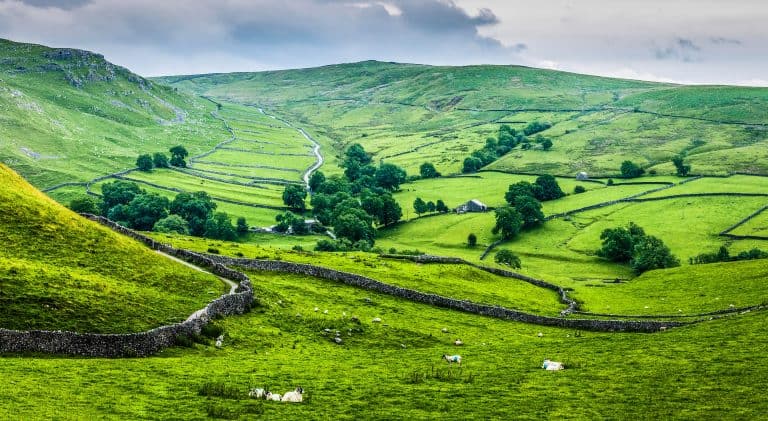

Parkin Ingredients
Parkin is commonly associated with Yorkshire, England though it is also eaten in Lancashire. There is at least one key difference between the two versions however: Yorkshire parkin traditionally uses black treacle resulting in a very rich and dark flavor and color.
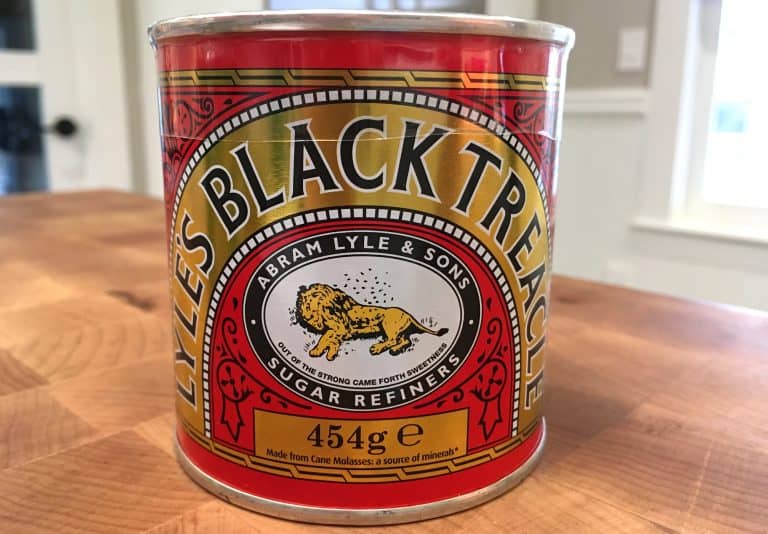
Lancashire uses golden syrup, resulting in both a lighter color and flavor. Lancashire parkin also tends to be sweeter with a higher sugar content.
Many modern recipes for both versions cross regional lines and use some of each. It comes down to personal preference. We’re featuring a more traditional Yorkshire parkin that is heavy on the treacle/molasses with a little golden syrup, but feel free to adjust the black treacle to golden syrup ratio according to your preference. If you’re not sure, go with less treacle and more golden syrup than what this recipe calls for – traditional Yorkshire parkin produces a very bold flavor that you may not be used to.
Important Note: While you can substitute molasses for black treacle, there is no substitute for golden syrup. Corn syrup is not remotely the same thing. It is starkly different in flavor with golden syrup having a wonderfully rich, caramelized flavor. Again, be sure to use genuine golden syrup.
Parkin uses black treacle and/or golden syrup in large quantities resulting in a delightfully chewy, sticky cake.
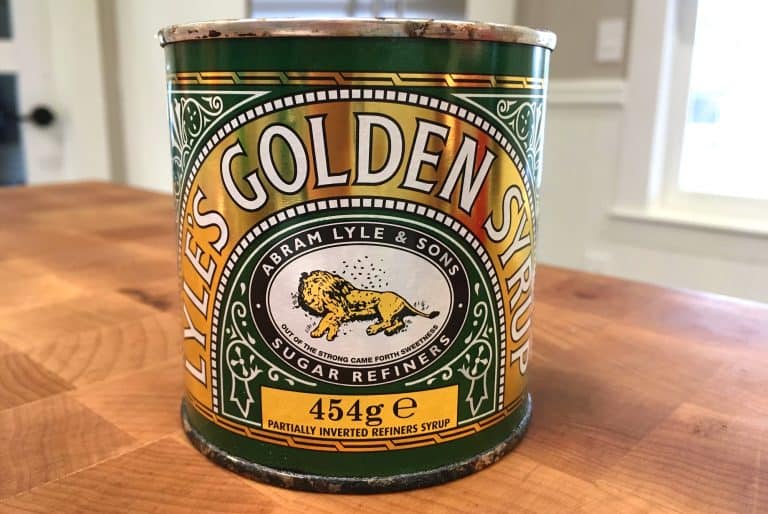
You can also very easily make your own golden syrup.
Check out our recipe for homemade Golden Syrup!
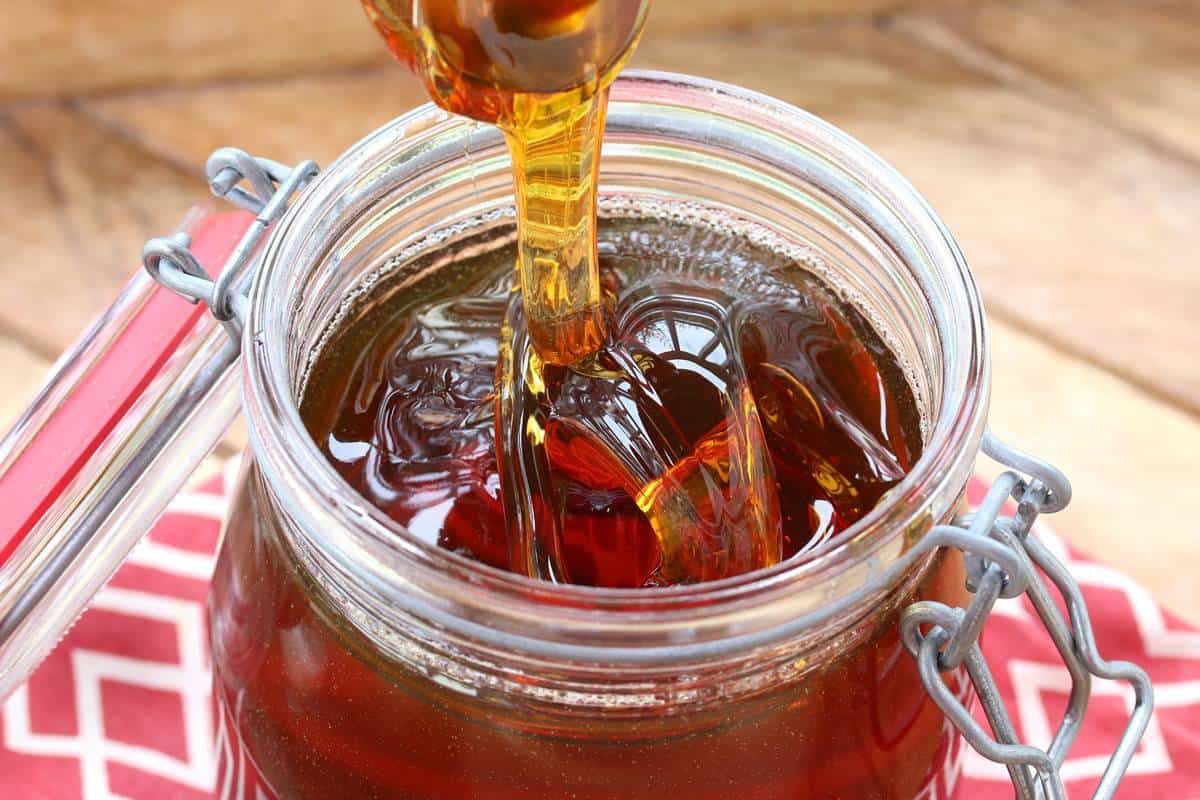
LET’S TALK OATS. Aside from the high quantity of black treacle and/or golden syrup, another thing that makes parkin unique is the addition of oats. Yorkshire parkin simply isn’t Yorkshire parkin without oats. Oats, not wheat, were the staple grain of the poor in this region and that is the primary grain in Yorkshire parkin. The form of oats traditionally used in parkin is not rolled outs, it’s what’s referred to as medium oatmeal in England.
Whole oat groats are dehusked and can either be milled into a fine, medium or course “oatmeal.” Parkin calls for medium. An easy way to make “medium oatmeal” yourself is to take steel-cut oats (also known as Irish oats in the UK) and pulse them briefly in a food processor until they are broken down but not to a fine flour, you want some small chunks to remain which will be visible in the finished parkin and contribute to that wonderful chewy texture of the cake.
Traditionally Yorkshire parkin is also made with lard instead of butter. Lard adds a layer of richness and also creates a moister cake. We’re using some of each to get the best of both worlds but you can use all butter if you prefer.
Finally, a very important key to making parkin is to LET IT SIT IN A SEALED CONTAINER FOR AT LEAST 3 DAYS BEFORE EATING. The resting time is what develops both the texture and the flavor of the cake and is essential. The oats will soften, the treacle and golden syrup will fully penetrate and soak through the grains, and the flavor of the spices will fully develop. So don’t be impatient, let time do its intended job!
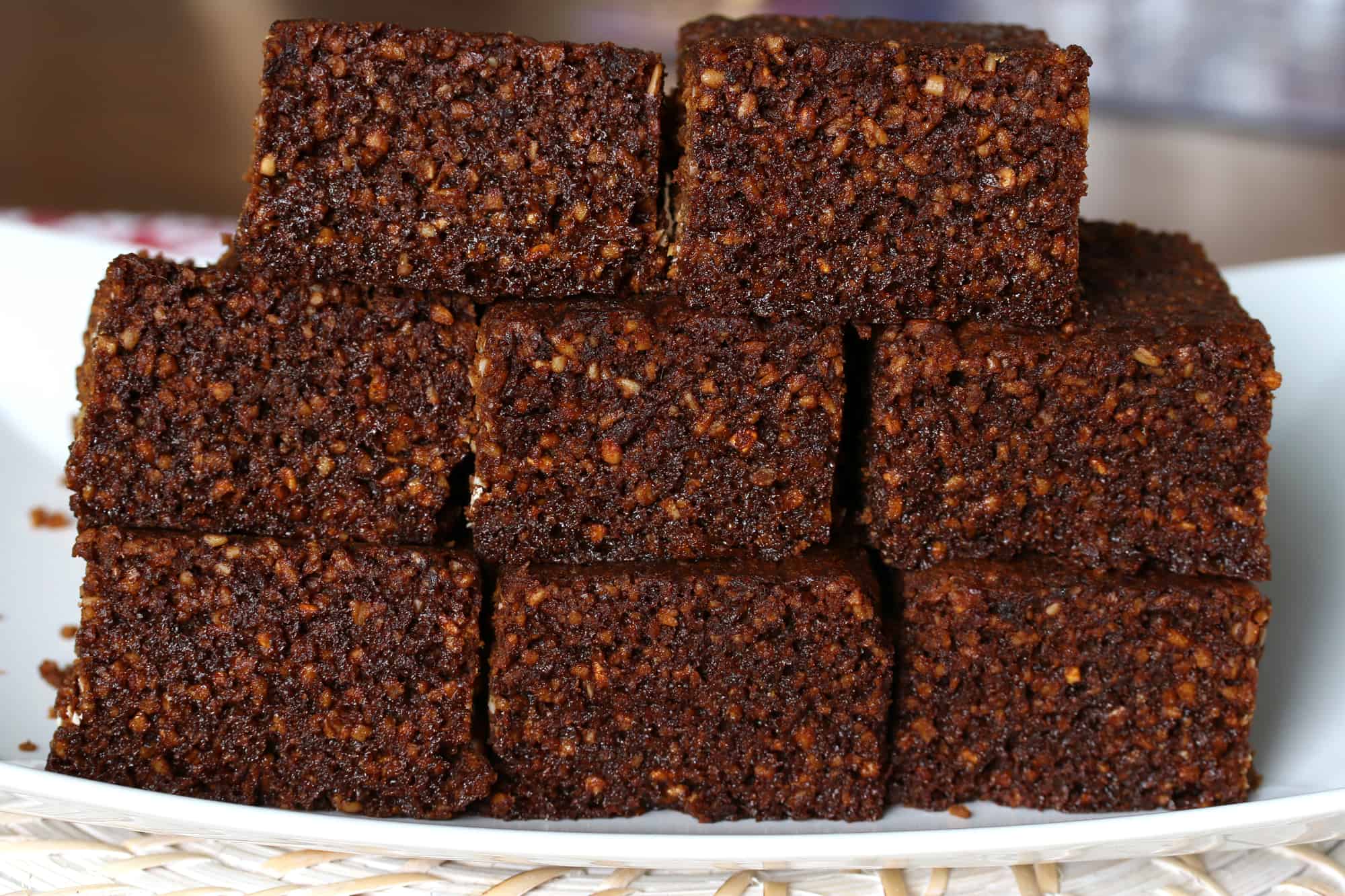
And so we present Yorkshire Parkin, that famously dark, rich, chewy, sticky, deeply flavorful cake that is the provides the perfect sweet comfort for those cold Fall and Winter nights!
If you’re a fan of gingerbread and are looking for something uniquely different – this is it!
And remember, even Mrs. Whittaker was willing to risk jail time in order to make it!
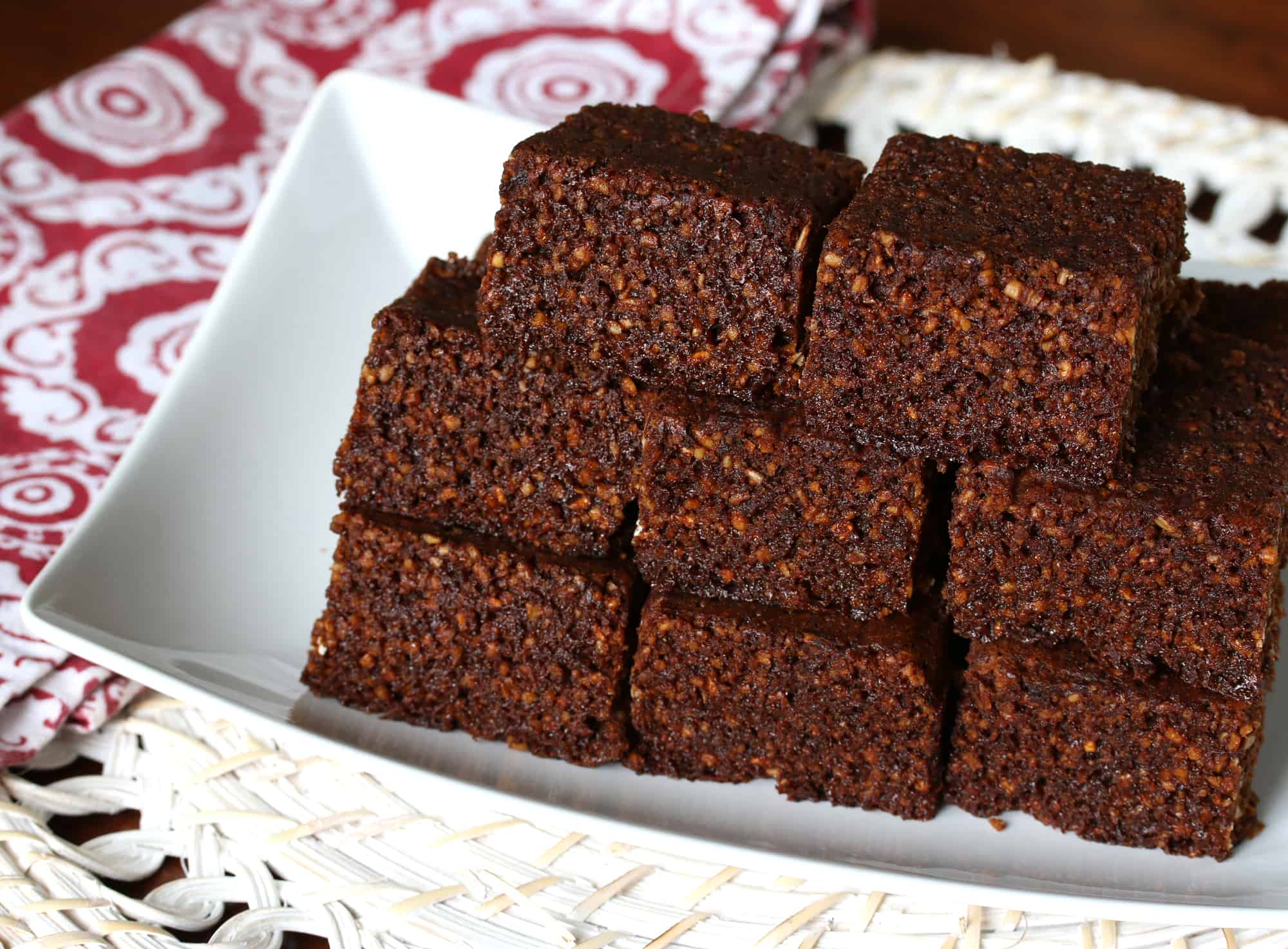
Traditional Yorkshire Parkin Recipe
Let’s get started!
Place the medium oatmeal (see blog post and recipe box for a description of what that is and how to make it) in a large bowl along with the flour, spices, salt and baking powder.
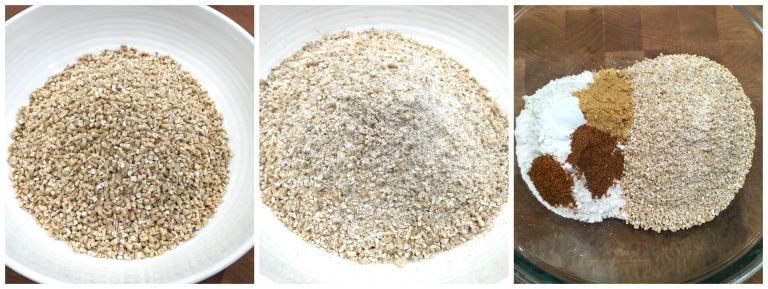
In a medium saucepan add the brown sugar, black treacle, golden syrup, butter and lard (if using).
Heat the mixture until the sugar is melted (don’t boil it) and remove from the heat. Let it cool for 5 minutes.
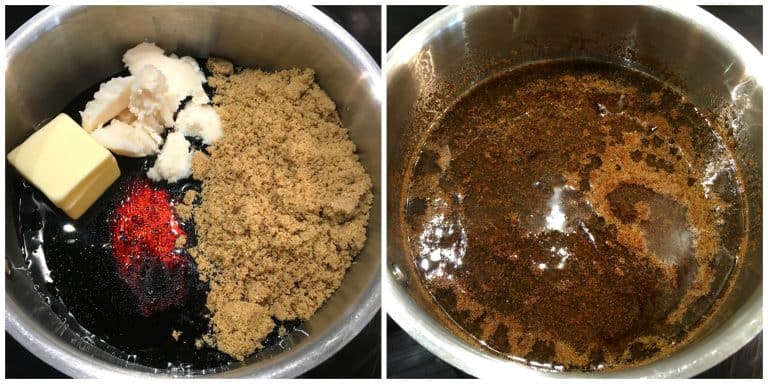
Pour the hot mixture into the dry mixture and stir well to combine.
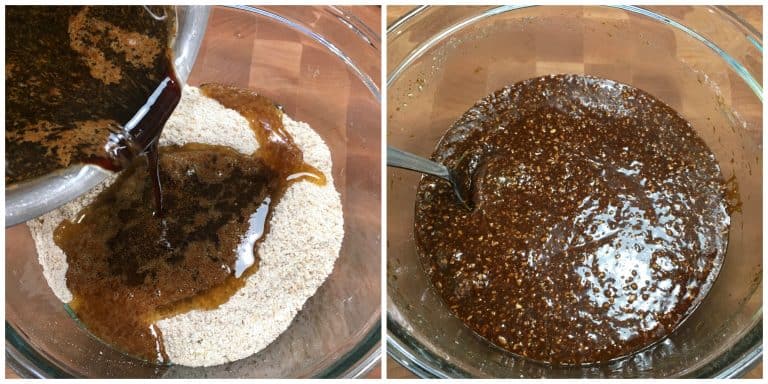
Add the candied ginger, egg and milk and stir well to combine. The batter will be liquid and sticky.
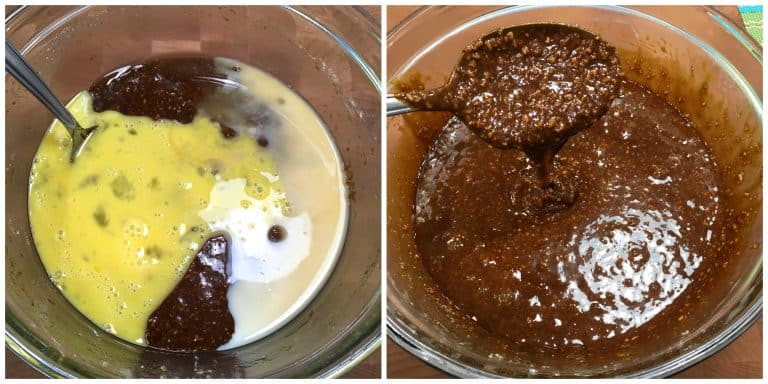
Generously grease an 8×8 inch baking pan and line the bottom with parchment paper.
Pour the batter into the baking pan and smooth the top. In an oven preheated to 300 degrees F, bake the parkin for 70-80 minutes or until a toothpick inserted into the middle comes out clean. The cake should be fairly firm but springy.
Let the cake cool in the pan.
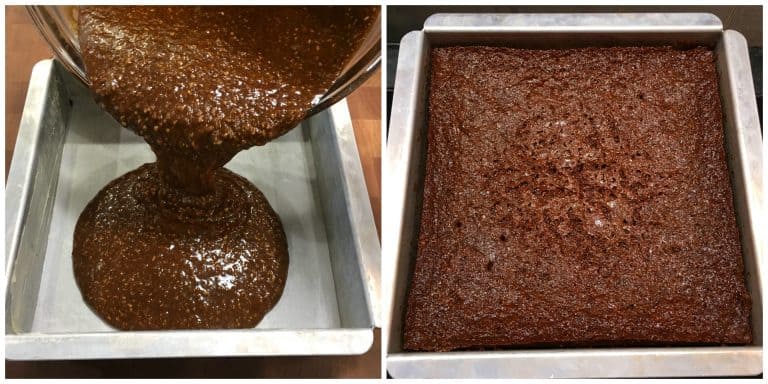
Invert the cake onto a platter. Peel off the parchment paper. Cut the parkin into squares.
Place the squares into an airtight container and let it sit for at least 3 days before eating.
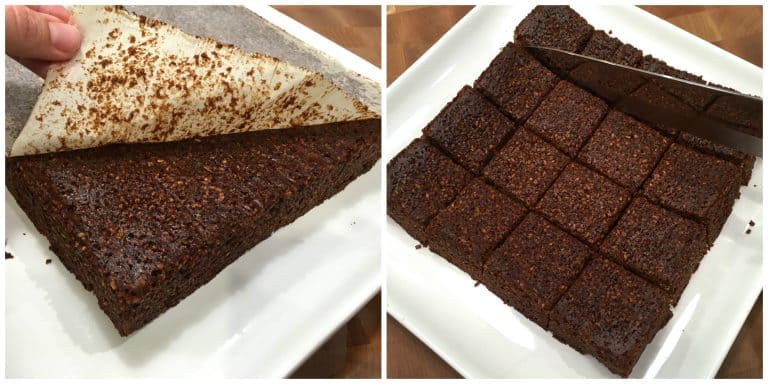
Enjoy!

For more authentic British treats try my:
- Treacle Tart
- Crumpets
- Spotted Dick
- Sticky Toffee Pudding
- Chelsea Buns
- Hot Cross Buns
- Eccles Cakes
- Lardy Cake
- Seed Cake
- Flapjacks
- Scottish Shortbread
- Bara Brith (Welsh Tea Bread)
- Barmbrack (Irish Tea Bread)
- Mincemeat
- Mince Pies
- Christmas Pudding
- Victoria Sponge Cake
Save This Recipe

Yorkshire Parkin
Ingredients
- 1 1/2 cups medium oatmeal , see NOTE
- 3/4 cups all-purpose flour
- 1 1/2 teaspoons baking powder
- 2 teaspoons ground ginger
- 1 teaspoon Mixed Spice
- Homemade Mixed Spice Recipe (recommended)
- 1/4 teaspoon ground mace
- 1/4 teaspoon salt
- 2/3 cups Black Treacle (can substitute dark molasses) **See NOTE about the quantity
- 1/4 cup Golden Syrup (there is no substitute, the flavor is very different than corn syrup)
- Homemade Golden Syrup (click link for recipe – it's very easy to make!)
- 1 cup loosely packed brown sugar
- 6 tablespoons butter
- 2 tablespoons lard (optional, can substitute butter)
- 1/4 cup candied/crystallized ginger , finely diced (optional)
- Homemade Candied Ginger Recipe
- 1 large egg , lightly beaten
- 2 tablespoons whole milk
Instructions
- Generously grease an 8×8 inch baking pan and line the bottom with parchment paper. Preheat the oven to 300 degrees F.
- Place the medium oatmeal in a large bowl along with the flour, spices, salt and baking powder. Set aside.
- In a medium saucepan add the brown sugar, black treacle, golden syrup, butter and lard (if using). Heat the mixture until the sugar is melted (don't boil it) and remove from the heat. Let it cool for 5 minutes.Pour the hot mixture into the dry mixture and stir well to combine. Add the candied ginger, egg and milk and stir well to combine. The batter will be liquid and sticky.Pour the batter into the prepared baking pan and bake 70-80 minutes or until a toothpick inserted into the middle comes out clean. The cake should be fairly firm but springy. Let the cake cool in the pan. Invert the cake onto a platter. Peel off the parchment paper. Cut the parkin into squares.
- Place the squares in an airtight container and let it sit for at least 3 days before eating (not in the fridge or it will get hard). The oats will soften, the treacle and golden syrup will fully penetrate and soak through the grains, and the flavor of the spices will fully develop.
Notes
Nutrition
Originally published on The Daring Gourmet November 10, 2018

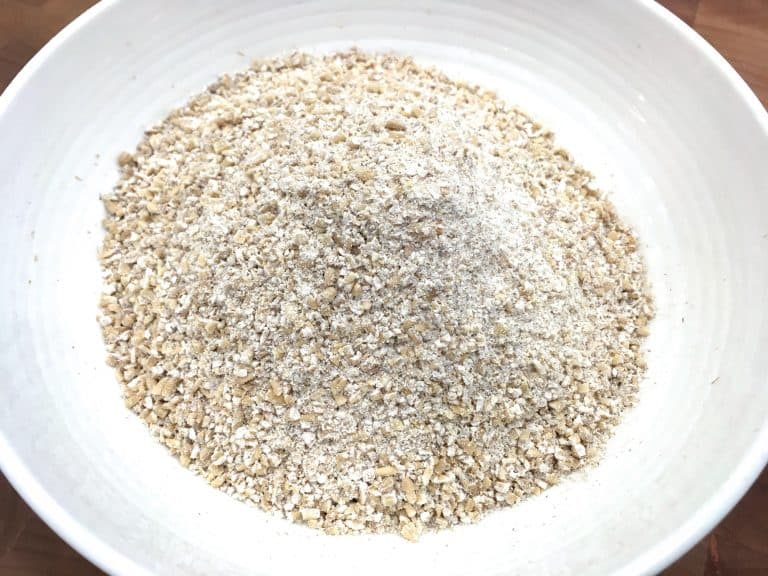


















Great article I liked very much, I will look for you in the networks
to follow you
Thank you for sharing your knowledge!
Love your recipes Kimberly, thanks.
There’s a typo in the Yorkshire Parkin recipe, step 5 says cooking time 70-80 minutes….way too long!
Guess you meant 30-40…
Thank you, Anne! It is 70-80 minutes, it’s baked low and slow at 300 F/150 C. Thank you for catching the wrong time in that other section.
Wow amazing recipe with full of nutrient. Many Thanks for posting this recipe, I will must try to home.
Finally found it!
Ann Birchenough’s Parkin
1 lb (UK pounds are 16 ounces)fine oatmeal
1 lb Golden Syrup
1 cup plain flour (I imagine it would have been a breakfast cup so probably the same as a US cup measure
1 cup milk
a quarter lb of lard
1 tsp baking soda
2 tsp baking powder
2 dessert spoons sugar
1 Tbs ground ginger
Melt lard, syrup and ginger together. Warm the milk; add the oatmeal and flour to the lard mixture. Mix warmed milk with soda and add to first mixture. Put in baking powder then mix thoroughly. Pour into pan lined with greased grease-proof paper.
Bake for 1 hour at 150 C or 325 F.
I have an ancient Yorkshire recipe for Mrs. Mepham’s Christmas cake somewhere…
You’re a gem, Toffeeapple, thank you so much for taking the time to find and share this! And if you end up finding that Christmas cake recipe, I would love to see that as well! :) Warmly, Kimberly
This needs to happen! So flavorful!
This cake seems to be so rich and looks fantastic!
This is awesome! I love everything about this recipe, need to try this!
This checks all my holiday boxes!I bet this smell so good!
I will have to give this dessert a try. The combination of flavors sounds like a great authentic taste.
Such a fantastic cake!! I bet it tastes ahhmaazing! YUM!!
This has taken me right back to my early years as a housewife in 1973. We had moved to a new housing development fifty miles away from everything we knew and, with very little money coming in each week, I had to budget carefully. My neighbour was from Yorkshire and we got on very well together, looking after each other’s children so that one could have a little time alone (we are still friends and regularly lunch together). We used to share recipes and she gave me one for Parkin which came from her Great Grandmother and was dated to about 1850 and handwritten in a journal. I copied it and used it many times, especially at this time of year to celebrate Bonfire Night. I shall look it out later and, if it differs greatly from yours I will let you know in what regard it does so.
Thank you for taking the time to write this post.
Oh wow, that is fantastic, Toffeeapple, I would LOVE to know how that 1850 recipe compares, thank you! From what I’ve researched, Parkin is a derivative from the earlier “Tharf Cake” which was much simpler, drier, and less flavorful. How long the transition period from Tharf to Parkin was or when exactly the Parkin as we know it today was complete, I don’t know. I’ll be fascinated to know where the 1850 recipe fits in the transition. As someone who is deeply interested in food history, I’ve been gradually purchasing and growing my vintage cookbook collection (all 19th century and older) from Germany, the U.S. and Great Britain. These original sources are invaluable for getting the true facts about the cooking of those eras. The Parkin was challenging and I based my recipe on old descriptions I was able to source, but was unable to find an actual recipe dating back as far as the one you have. What a treasure, I’m excited to see it. I’ve no doubt you have quite the treasure trove of other old recipes, I would love to dive into it :)
This is really interesting! Love the story behind the recipe! Can’t wait to give it a try!
I LOVE gingerbread so I can’t wait to try this cake! Thank you for sharing this recipe!
I LOVED reading this! It’s fascinating to know the background of a recipe especially from a different country. This cake sound delicious.
Haha, I LOVE the story behind this cake!